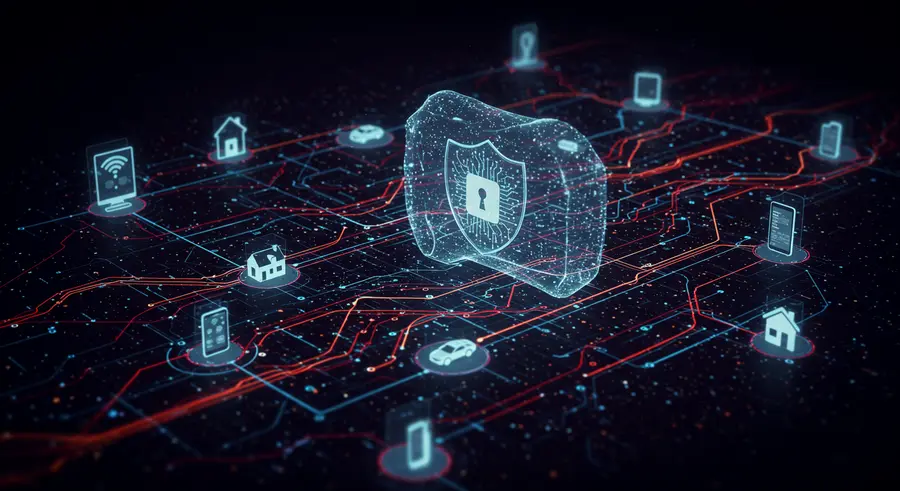Appearance

Welcome, tech innovators and digital guardians! 👋 Today, we're diving deep into a topic that's becoming increasingly critical in our hyper-connected world: the symbiotic relationship between Artificial Intelligence (AI) and the Internet of Things (IoT), particularly in the realms of network optimization and security. As our physical and digital worlds continue to intertwine through countless IoT devices, the need for robust, intelligent systems to manage and protect them has never been more urgent.
The IoT Landscape: A Double-Edged Sword 🌐
The Internet of Things has revolutionized industries, smart homes, and even personal health. From smart thermostats to industrial sensors, IoT devices collect vast amounts of data, enabling unprecedented levels of automation, efficiency, and insight. However, this proliferation of connected devices also introduces significant challenges:
- Vast Data Volume: Billions of devices generate zettabytes of data daily, making traditional data processing and analysis methods obsolete.
- Network Complexity: Managing diverse devices, protocols, and communication patterns creates intricate network architectures.
- Security Vulnerabilities: Each new device is a potential entry point for cyber threats, leading to a sprawling attack surface.
This is where AI steps in as the ultimate enabler and protector.
AI: The Brains Behind Smart IoT 🧠
AI isn't just a buzzword; it's the intelligent core that transforms raw IoT data into actionable insights and autonomous operations. Here's how AI is revolutionizing IoT:
1. Real-time Data Processing and Analysis 📊
IoT devices produce continuous streams of data. AI, particularly machine learning algorithms, can process this data in real-time, identifying patterns, anomalies, and trends that would be impossible for humans to discern. This leads to:
- Predictive Maintenance: In industrial IoT, AI analyzes sensor data from machinery to predict failures before they occur, minimizing downtime and maintenance costs.
- Optimized Resource Allocation: In smart cities, AI can analyze traffic patterns from connected sensors to optimize traffic light timings, reducing congestion.
2. Network Optimization: Smarter, Faster, More Efficient 🚀
AI algorithms can dynamically manage and optimize network resources, ensuring seamless communication and performance across the IoT ecosystem.
- Dynamic Traffic Management: AI can reroute data traffic to avoid congestion, ensuring low-latency communication for critical applications.
- Proactive Capacity Planning: By analyzing historical data and predicting future demands, AI helps network administrators provision resources effectively, preventing bottlenecks.
- Self-Healing Networks: AI-powered systems can detect network faults and automatically implement corrective measures, ensuring high availability and reliability.
3. Fortifying Security: The AI Shield 🛡️
Perhaps one of the most critical applications of AI in IoT is in enhancing security. The sheer number and diversity of IoT devices make them prime targets for cyberattacks. AI brings sophisticated defense mechanisms:
- Anomaly Detection: AI establishes a baseline of normal network behavior. Any deviation from this baseline—such as unusual data transfers or access attempts—triggers an alert, indicating a potential threat. This is crucial for detecting zero-day attacks.
- Threat Prediction and Prevention: Machine learning models can analyze vast datasets of cyberattack patterns to predict and prevent future attacks. They can identify malicious code, phishing attempts, and botnet activities with high accuracy.
- Automated Incident Response: In the event of a security breach, AI can initiate automated responses, such as isolating compromised devices, blocking malicious IP addresses, or deploying patches, minimizing the impact of an attack.
- Behavioral Biometrics for Devices: AI can create unique behavioral profiles for each IoT device. Any deviation from this profile could indicate unauthorized access or compromise.
Case Study: AI in IoT Security Challenges and Best Practices 🔗
For a deeper dive into the security challenges and best practices in IoT, you can refer to this insightful article: IoT Security Challenges and Best Practices
This article highlights the evolving threat landscape and provides strategies for building more resilient IoT systems, perfectly complementing the role of AI in this domain.
The Future is AI-Powered IoT 💡
The synergy between AI and IoT is not just a trend; it's the foundation for the next generation of intelligent systems. As AI capabilities continue to advance, we can expect:
- More Autonomous IoT Systems: Devices that can learn, adapt, and make complex decisions with minimal human intervention.
- Hyper-Personalized Experiences: IoT devices powered by AI will offer services tailored to individual user preferences and behaviors.
- Enhanced Edge AI: More AI processing will occur at the edge of the network, closer to the data source, reducing latency and improving responsiveness.
In conclusion, AI is not merely an enhancement for IoT; it is the vital force that unlocks its full potential, transforming it into a secure, efficient, and truly intelligent ecosystem. Embracing AI in IoT network optimization and security is not just an option; it's a necessity for navigating the complexities of our connected future. Stay secure, stay smart! ✨